
Introduction
Since we developed the ability to think about our own histories, humans have been wondering what life would be like if things went differently. There is an entire family of literature devoted to alternate histories, and it could be said that every fiction story is an answer to the “What if?†questions asked in our lives. In the serialized fiction medium, comic books, already diverged from our reality, have a special relationship with this speculation, perhaps because of their connection to science fiction and their ongoing dialogue with fans during publication.
The DC Comics Universe in particular, already populated with imaginary characters, has re-imagined, built, destroyed and denied, then rebuilt a complicated lattice of “real†and alternative histories for its denizens. The parallel realities created here, while criticized by some as confusing and frustrating, are actually essentially linked with the process of making the DC Universe feel real, and are important foundations of the super hero genre in comics.
Questioning Events
 In science fiction, alternate history is a firmly established sub-genre. Most ancient stories, though probably originating in factual events, spin off into fantastical epics. The battle for Troy, for example, is thought to have happened, but it’s highly unlikely that it played out as the sequence of events we know from the Iliad.
In science fiction, alternate history is a firmly established sub-genre. Most ancient stories, though probably originating in factual events, spin off into fantastical epics. The battle for Troy, for example, is thought to have happened, but it’s highly unlikely that it played out as the sequence of events we know from the Iliad.
With fiction’s roots in reinterpreting reality, it’s easy to see how science fiction writers would be drawn to play with the idea. Not content with writing stories about the world if Hitler won World War II, they pushed the concept further: What if people from our world could visit or interact with people from their world? What if you woke up in an alternate timeline ? [1]
The questions seem a little far-fetched, but scientists today acknowledge that we can only firmly understand the probability of events (especially at a sub-atomic level, where observing changes the objects being observed), and not the certainty . Much to Einstein’s probable dismay, it seems that God does indeed play dice with the universe. While this discovery has never firmly supported the idea that all the other possible choices live out in other versions of our universe, it does allow the idea that the only reason “this” happened is because in a certain percent of other places “that” happened. We just happen to live in “this” universe . [2]
Space Babies
 And in this universe, we invented comics. Comics, also, have always had an interesting relationship with science. The funnies may have come first, but our most recognizable early heroes sprang straight out of the pages of early pulps, many of which featured science based characters like Doc Savage. The action was there but so was the strange natural philosophy. These pulp science characters are ancestors of our modern super-heroes . [3]
And in this universe, we invented comics. Comics, also, have always had an interesting relationship with science. The funnies may have come first, but our most recognizable early heroes sprang straight out of the pages of early pulps, many of which featured science based characters like Doc Savage. The action was there but so was the strange natural philosophy. These pulp science characters are ancestors of our modern super-heroes . [3]
It’s no coincidence that Superman was a space baby. The evolution of pulps at the time meant that comics were hitting their stride at the same time as science fiction was coming into its own. This meant that many of these “first fans †of science fiction were also reading comics. [4] Fanbase, the community support structure built out of the consumers of these works, became increasingly important, as young readers of superman would send in suggestions for new powers or plot thread suggestions, some taken more seriously than others. It was just as common then as it is now for fans to wonder, vocally, about their favorite characters . [5] Who would win in a fight, Superman or Captain Marvel?
Reaffirming “Reality”
 DC understood the value of these characters in people’s lives, understood that as their readers grew, the characters needed to stay in the public consciousness. The idea of continuity, that previous stories had to “agree†with current ones, helped keep the characters, particularly Superman, relevant instead of becoming a fad. In perhaps an ironic twist of words, DC reaffirmed the “reality†of the characters, which was being built by this ongoing history, by releasing what it called “Imaginary Stories .†[6]
DC understood the value of these characters in people’s lives, understood that as their readers grew, the characters needed to stay in the public consciousness. The idea of continuity, that previous stories had to “agree†with current ones, helped keep the characters, particularly Superman, relevant instead of becoming a fad. In perhaps an ironic twist of words, DC reaffirmed the “reality†of the characters, which was being built by this ongoing history, by releasing what it called “Imaginary Stories .†[6]
Why these stories were separated from the “real†stories was obvious: they were usually either extremely silly or borderline traumatic for the characters. At that time, any main character marrying, being killed, or even splitting into two versions of themselves, was considered a negative impact on the status quo of the storylines. Hence, “imaginary†tales. These stories worked, not only as entertainment, but to affirm the existence of the Golden Age characters.
Return Of The First Fans
 Then, as comics headed towards what would become known as the Silver Age, the readers who grew up with science fiction (pulps and comics) became the creators. One of the most influential of these “first fans†was Julius Schwartz. The creator of the first science fiction fanzine in 1932, he joined All-American Comics (the predecessor to DC) in 1944 and brought his sci-fi sensibility with him. In the ’50s, he launched Mystery in Space and Strange Adventures, dedicated sci-fi titles. Then, towards the end of the decade and early ’60s he made the moves he’s most well known for: re-introducing the Flash and Green Lantern as updated versions of their Golden Age successors.
Then, as comics headed towards what would become known as the Silver Age, the readers who grew up with science fiction (pulps and comics) became the creators. One of the most influential of these “first fans†was Julius Schwartz. The creator of the first science fiction fanzine in 1932, he joined All-American Comics (the predecessor to DC) in 1944 and brought his sci-fi sensibility with him. In the ’50s, he launched Mystery in Space and Strange Adventures, dedicated sci-fi titles. Then, towards the end of the decade and early ’60s he made the moves he’s most well known for: re-introducing the Flash and Green Lantern as updated versions of their Golden Age successors.
The introduction of the new Flash, Barry Allen, was done in a particularly interesting way. At first glance simply a classic campy moment, it’s actually an early postmodern meta-text. We are introduced thusly: “While in the police laboratory, scientist Barry Allen chuckles over an old magazine. †[8] This “old magazine†is an issue of Golden Age Flash Comics. So here, not only do we have a scientist lead character, but he is also a comic character reading about comic characters. Two spreads later, he has become the new Flash, and the meta-textual loop is closed . [9] Now there were two “Flashes.†The time was ripe for multiple earths. [7]
Bringing Jay Home
It wasn’t long before fans of the old Flash, Jay Garrick, had helped convince DC to reintroduce their favorite version of the character . [10] To do this, Schwartz and his writers dug into their science fiction knowledge, explaining that Flash could explore time and space by “vibrating at different frequencies.†They theorized that another parallel earth could be right on top of ours, invisible to those of us vibrating in a normal manner . [11]
 Science at the time had discovered enough about the atom and sub-atomic particles for this to sound reasonable, at least enough for a comic. The dual Flash stories were a huge success. It wasn’t long before various characters met their predecessors, soon resulting in yearly team ups between the Justice League of America and their Golden Age counterparts, the Justice Society. The heroes even had adventures on “Earth-Prime,†supposedly our reality. [12] The team-ups continued into the start of the Bronze Age, all the way into the ’80s.
Science at the time had discovered enough about the atom and sub-atomic particles for this to sound reasonable, at least enough for a comic. The dual Flash stories were a huge success. It wasn’t long before various characters met their predecessors, soon resulting in yearly team ups between the Justice League of America and their Golden Age counterparts, the Justice Society. The heroes even had adventures on “Earth-Prime,†supposedly our reality. [12] The team-ups continued into the start of the Bronze Age, all the way into the ’80s.
These comics introduced a younger generation of readers to the older characters at the beginning of the direct distribution system, a dedicated network of comic specialty shops, large fan conventions and the speculation market. Not only was continuity building because readers had a sure way of finding the next issue, they also could find old issues about these “new†characters they had just discovered.
The Coming Crisis
 The only problem was that the characters had never been designed with continuity in mind. With old versions, new characters being bought from other companies, and mistakes in continuity, the standard explanation was that anything unintelligible happened on an “alternate world.†With characters only able to interact through fantastical reality ships, crystal balls, and a variety of other hokey plot devices, the metaverse itself was beginning to weigh down the writers, who had to fact check against earlier source material that was often intentionally contradictory . [13] Fortunately, these early crossover stories, often called “Crisis on Multiple Earths†arcs, set the stage for a more grand gesture soon to come.
The only problem was that the characters had never been designed with continuity in mind. With old versions, new characters being bought from other companies, and mistakes in continuity, the standard explanation was that anything unintelligible happened on an “alternate world.†With characters only able to interact through fantastical reality ships, crystal balls, and a variety of other hokey plot devices, the metaverse itself was beginning to weigh down the writers, who had to fact check against earlier source material that was often intentionally contradictory . [13] Fortunately, these early crossover stories, often called “Crisis on Multiple Earths†arcs, set the stage for a more grand gesture soon to come.
It was the mid-1980s and comics seemed to be on the verge of recognition as a more serious medium. Green Lantern and Green Arrow were Hard Traveling Heroes confronting real urban issues, Alan Moore was writing Swamp Thing and addressing existential angst and the degrading environment, Batman had intentionally thrown off the camp that haunted him since the 60s, Frank Miller was creating serious works at Marvel – the world was ready for something drastic. DC had several releases planned, both important stand alone stories and reinventions of existing characters designed to make them more relevant to modern “serious†times. But they felt they could not just stop their current story arcs and start fresh. The universe overhaul would have to be story based. [14]
Enter The Wolfman
 Marv Wolfman, who had daydreamed in his youth of a story that simply had every hero he knew, managed to successfully pitch his idea for Crisis on Infinite Earths . [15] Frank Miller’s limited series Ronin had sold well, since word of mouth was able to raise interest in a series enough for readers to go back and find 1 st issues. Before this period, limited series were unthought-of because titles didn’t sell well until they had been going for some time.
Marv Wolfman, who had daydreamed in his youth of a story that simply had every hero he knew, managed to successfully pitch his idea for Crisis on Infinite Earths . [15] Frank Miller’s limited series Ronin had sold well, since word of mouth was able to raise interest in a series enough for readers to go back and find 1 st issues. Before this period, limited series were unthought-of because titles didn’t sell well until they had been going for some time.
Wolfman’s Crisis was designed as a 12 issue series. It was heavily promoted and crossed over into every DC title that took place in the mainstream universe, whether it was the futuristic Legion of Super-Heroes or the WWII Losers . Not only would readers of these ongoing titles be drawn into the Crisis in order to find out what was happening to “their†characters, the event allowed DC to firmly tie together their universe. It was housecleaning, but also setting the stage. [16]
While ongoing characters were the reason and the promotion for the event, in Crisis the characters are actually second fiddle. A relatively new creation, the Monitor and his dark anti-matter counterpart, the Anti-Monitor, stand next to the metaverse itself, which is decidedly center stage. The first spreads are of planets, many Earths, flowing off into infinity. One is under siege by a white light, which seems to destroy it, erasing the whole of that existence into nothingness. [17] [18]
 This scene plays over and over in the comic, as heroes from various worlds flee or are destroyed, wiped from the memory of the universe. After the requisite epic battles, the most important of which takes place at the beginning of time itself, the reader is told there is now (and to the characters always has been) just one world, one Earth.
This scene plays over and over in the comic, as heroes from various worlds flee or are destroyed, wiped from the memory of the universe. After the requisite epic battles, the most important of which takes place at the beginning of time itself, the reader is told there is now (and to the characters always has been) just one world, one Earth.
The epilogue in Crisis , and new ongoing titles such as Man of Steel and Who’s Who In The DC Universe, explained the new origins for DC’s characters . [19] DC had successfully pulled together its universe, along with those of Charleton Comics and the Captain Marvel Family, among others, with the goal of keeping everything straight from this new beginning . [20]
Reality Ripples
 It is important to note that special attention is paid to character perspective in Crisis. The heroes who were at the beginning of time remember the multiple worlds (at least for a few issues), but their friends who were back on Earth retain nothing of the traumatic events.
It is important to note that special attention is paid to character perspective in Crisis. The heroes who were at the beginning of time remember the multiple worlds (at least for a few issues), but their friends who were back on Earth retain nothing of the traumatic events.
Things start to “right†themselves so Lex Luthor was always a megalomaniacal businessman and never primarily a scientist, so Clark Kent’s parents were always still alive. However, multiversity is never truly destroyed – the old multiple earths gave way for this new start but left room for ongoing alternate realities. [21]
In this “Post-Crisis†world, there was a short period for establishing the “real†histories through the aforementioned titles like Man Of Steel and others such as Batman: Year One . Some creators also chose to deal with the metaphysical implications of “destroying†the old histories.
In Grant Morrison’s Animal Man , the second string titular super hero has a variety of postmodern adventures. In the fifth issue, he encounters a refugee from a “Funny Animal” reality reminiscent of Looney Tunes , a coyote who is dissatisfied with the senseless struggle. He exchanges his existence for “peace among the beasts†and enters the “dark hell of the second reality†above – an allusion to the new “darker†style of post Crisis continuity . [22]
 The series ends with a 4th wall breaking confrontation between the hero and his writer . [23] Morrison’s work here is linked strongly with the literary theory of the time and is perhaps more interesting, as Jason Craft states, he “does not create and enter a world and then contest it: he inherits a world, which he then investigates and contests†– unlike many postmodern prose writers. On top of these meta-textual investigations, there is a strong feeling that the alternate realities explored work with comics.
The series ends with a 4th wall breaking confrontation between the hero and his writer . [23] Morrison’s work here is linked strongly with the literary theory of the time and is perhaps more interesting, as Jason Craft states, he “does not create and enter a world and then contest it: he inherits a world, which he then investigates and contests†– unlike many postmodern prose writers. On top of these meta-textual investigations, there is a strong feeling that the alternate realities explored work with comics.
Animal Man does not seem less real for having interactions with, alternatively, a cartoon character and then a “real life†person. In fact, he seems more real for his ability to traverse the boundaries of these various mediums, confronting us directly, pleading for us to recognize his agency. [24]
It’s worth noting that Animal Man’s interactions with the reader don’t seem out of place in the history of comics, either – Golden Age heroes seemed to think nothing of turning towards their fans with a quick “That’s why crime never pays” announcement. While a “serious” fiction character might not have been able to get away with that kind of cheese, the playful history of sequential art is exactly what allows it to be so perfect for more important and dramatic investigation.
The Quick Return of Alternate Worlds
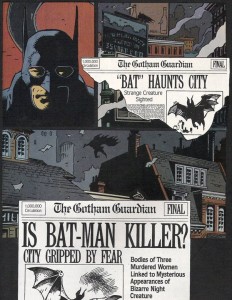 During this early Post-Crisis period, alternate history re-appeared within four years. Instead of Imaginary Tales , we were presented with an imprint called Elseworlds . The first of these titles, Gotham By Gaslight matched a Victorian era Batman against Jack the Ripper. [25] While a great opportunity for creators to tell tales unburdened by continuity, important because of the inevitability of multiple interpretations of iconic characters, these “elseâ€-worlds again allowed readers to feel that the primary universe was the real one.
During this early Post-Crisis period, alternate history re-appeared within four years. Instead of Imaginary Tales , we were presented with an imprint called Elseworlds . The first of these titles, Gotham By Gaslight matched a Victorian era Batman against Jack the Ripper. [25] While a great opportunity for creators to tell tales unburdened by continuity, important because of the inevitability of multiple interpretations of iconic characters, these “elseâ€-worlds again allowed readers to feel that the primary universe was the real one.
Elseworlds slowly built, as small squarebound releases instead of grand ongoing epics, until alternative worlds again broke into mainstream continuity with Grant Morrison’s Earth 2 , which reintroduced the Silver Age evil versions of the Justice League heroes . [26] Other important releases were Kingdom Come , which started as an Elseworlds title but became important to later continuity, The Tangent universe which also appeared in later “mainstream” plots, and various other smaller releases. Soon a large stable of alternative worlds were available. [27] [28]
DC then introduced the concept of Hypertime in The Kingdom , which sought to tie together many of the existing alternate histories with some backstory about what happened to some of the “lost†characters after Crisis. Hypertime, basically a catch-all device, postulated that multiple timelines always existed, and according to DC writer Mark Waid “It’s all true.†However, the ways in which characters from multiple continuities could interact were still very limited, and DC editors did not seem fond of Hypertime when compared with earlier (or later) multiverse theory. The device was only used sparingly, but was productive in building a new ongoing mythology, since it allowed fans to feel like their particular favorite character iterations were all valid. [29]
Unto Infinity
While fan focus was drawn to dramatic events of other natures, Hypertime was soon replaced in a new crisis, Infinite Crisis , which was followed by a critically acclaimed series called 52 . [30] [31] There are many important aspects to these works, but of primary importance here is the official reintroduction of the multiverse, which could never truly be destroyed, only rendered “unreal†to the perceptions of those inside of it. The new multiverse has 52 labeled worlds, which so far include many Elseworlds titles, the Tangent Universe, as well as other commercial DC properties like the DC Animated universe, the All-Star imprint, Frank Miller’s Dark Knight Returns and even our real world, which used to be Earth-Prime in the Silver Age. [32]
 Another DC imprint, Wildstorm, had a separate explanation presented in a book by Warren Ellis, Planetary , where a team of “Archaeologists of the Impossible” discover a huge leafing multiverse called the Snowflake. They eventually even encounter many versions of mainstream DCU character Batman, all in one issue, which itself is a humorous nod to the myriad existing Batman iterations. [33]
Another DC imprint, Wildstorm, had a separate explanation presented in a book by Warren Ellis, Planetary , where a team of “Archaeologists of the Impossible” discover a huge leafing multiverse called the Snowflake. They eventually even encounter many versions of mainstream DCU character Batman, all in one issue, which itself is a humorous nod to the myriad existing Batman iterations. [33]
It seems now that the multiverse is here to stay. Indeed, an announced project by Grant Morrison is Multiversity , the implications of which are obvious. While not much is known about this title yet, it seems that modern writers are content to continue creating in ongoing continuity as well as playing with different versions of popular characters, without perceiving them as mutually exclusive.
The embracing of alternate histories has allowed DC to give writers a much broader range of creative choices, along with the knowledge that their creations could still ripple across other work. The “alternate†histories cement the “reality†of the mainstream storylines, making the fictional characters seem more real. The traveling between worlds allows us to feel more connected to the false world – as we feel ours is only a thin barrier away from theirs.
This is doubly felt by the existence of comics within the comics. Maybe they read comics about us the way we read comics about them. This accepted means of embracing further fantasy pleases fans of the medium and keeps people involved in the culture – an ongoing conversation that will keep “superhero” as a strong genre in comics. From Crisis to Crisis, Imaginary to Elseworlds, the alternate history is going strong at DC Comics and the superhero subgenre is all the better for it.
2009/2010
Works Cited
Augustyn, Brian. Batman: Gotham By Gaslight. New Jersey: Dc Comics Inc., 1989.
Binder, Otto, John Broome, Leo Dorfman, Bill Finger, Edmond Hamilton, Jim Shooter, Jerry Siegel. Introduction by Craig Shutt. DC’s Greatest Imaginary Stories: 11 Tales You Never Expected to See! New York: DC Comics, 2005.
Broome, John, and Gardner Fox. Crisis on Multiple Earths: The Team-Ups – Volume 1 . New York: DC Comics, 2006.
Busiek, Kurt, James Robinson, and J.H. Williams. Tangent Comics Volume 1 . New York: DC Comics, 2007.
Cassaday, John, and Warren Ellis. Planetary: Crossing Worlds. New York: Wildstorm, 2004.
Craft, Jason. “Comics Universes as Fiction Networks .” PCA/ACA Conference, San Antonio, TX. 5 Apr. 2004.
Fox, Gardner, and Mike Sekowsky. Crisis On Multiple Earths, Vol. 1. New York: DC Comics, 2002.
Gresh, Lois H., and Robert Weinberg. The Science of Supervillains. New York, NY: Wiley, 2004.
Johns, Geoff. Infinite Crisis. New York: DC Comics, 2008.
Johns, Geoff, Grant Morrison, Greg Rucka, and Mark Waid. 52 Vol. 1. New York: DC Comics, 2007.
Jones, Gerard. Men of Tomorrow: Geeks, Gangsters, and the Birth of the Comic Book. New York: Basic Books, 2005.
Kanigher, Infantino, and Kubert. “Mystery of the Human Thunderbolt†The Flash Archives, Vol. 1 (DC Archive Editions). New York: DC Comics, 1998.
Klock, Geoff. How to Read Superhero Comics and Why. New York: Continuum International Publishing Group, 2002.
Long, Quentin. “Unca Cheeks Silver Age Comics Site: Quentin Long.” Multiverse 101: Alternate Timelines for Dummies . Accessed 27 May 2009 <http://www.geocities.com/cheeksilver/quentin1.htm>.
McLaughlin , Jeff . “ “What If?†DC’s Crisis and Liebnizian Possible Worlds†Comics as Philosophy. Jackson: University Press of Mississippi, 2005.
Morrison, Grant. JLA: Earth 2. New York: DC Comics, 2000.
Morrison, Grant. Animal Man, Book 1 – Animal Man. New York: Vertigo, 2001.
Morrison, Grant. Animal Man, Book 3 – Deus Ex Machina. New York: Vertigo, 2003.
Murdough, Adam. “Worlds Will Live, Worlds Will Die: Myth, Metatext, Continuity and Cataclysym in DC Comic’s Crisis on Infinite Earths.” MA Thesis, PDF Version . August 2006. Accessed 27 May 2009 <www.ohiolink.edu/etd/send-pdf.cgi?acc_num=bgsu115132947>
Olivetti, Ariel, Mark Waid, and Mike Zeck. The Kingdom. New York: DC Comics, 2000.
“Parallel Universe.” The Internet Encyclopedia of Science. Accessed 27 May 2009 <http://www.daviddarling.info/encyclopedia/P/parallel_universe.html>.
Perez, George, and Marv Wolfman. Crisis on Infinite Earths. New York: DC Comics, 2001.
Pustz, Matthew J.. Comic Book Culture: Fanboys and True Believers (Studies in Popular Culture). Jackson: University Press of Mississippi, 1999.
Sabin, Roger. Comics, Comix & Graphic Novels: A History Of Comic Art. London: Phaidon Press, 2001.
Turtledove, Harry & Martin H. Greenberg Edts.. Best Alternate History stories of the 20th Century. New York: Ballantine, 2001.
Waid, Mark. Kingdom Come. New York: DC Comics, 2008.
[1] Harry Turtledove & Martin H. Greenberg Edts.. Best Alternate History stories of the 20th Century . New York: Ballantine, 2001.[2] Quentin Long. “Unca Cheeks Silver Age Comics Site: Quentin Long.” Multiverse 101: Alternate Timelines for Dummies . Accessed 27 May 2009 <http://www.geocities.com/cheeksilver/quentin1.htm>.
[3] ibid
[4] ibid
[5] Marv Wolfman. “Introduction.†Crisis on Infinite Earths. New York: DC Comics, 2001.
[6] Otto Binder, John Broome, Leo Dorfman, Bill Finger, Edmond Hamilton, Jim Shooter, Jerry Siegel. Introduction by Craig Shutt. DC’s Greatest Imaginary Stories: 11 Tales You Never Expected to See! . New York: DC Comics, 2005.
[7] Long, http://www.geocities.com/cheeksilver/quentin1.htm
[8] Kanigher, Infantino, and Kubert. “Mystery of the Human Thunderbolt†The Flash Archives, Vol. 1 (DC Archive Editions). New York: DC Comics, 1998.
[9] ibid
[10] John Broome, and Gardner Fox. Crisis on Multiple Earths: The Team-Ups – Volume 1. New York: DC Comics, 2006.
[11] Long, http://www.geocities.com/cheeksilver/quentin1.htm
[12] Gardner Fox and Mike Sekowsky. Crisis On Multiple Earths Vol. 1. New York: DC Comics, 2002.
[13] Adam Murdough. “Worlds Will Live, Worlds Will Die: Myth, Metatext, Continuity and Cataclysym in DC Comic’s Crisis on Infinite Earths.” MA Thesis, PDF Version. August 2006. Accessed 27 May 2009 www.ohiolink.edu/etd/send-pdf.cgi?acc_num=bgsu115132947 , 3
[14] Murdough, 8
[15] Wolfman, “Introductionâ€
[16] ibid
[17] Murdough.
[18] Wolfman
[19] Murdough 1-2
[20] Wolfman, “Introductionâ€
[21] Wolfman, Perez, Issues 8-12
[22] Grant Morrison. Animal Man, Book 1 – Animal Man. New York: Vertigo, 2001.
[23] Grant Morrison. Animal Man, Book 3 – Deus Ex Machina. New York: Vertigo, 2003.
[24] Jason Craft. “Comics Universes as Fiction Networks .” PCA/ACA Conference, San Antonio, TX. 5 Apr. 2004.
[25] Brian Augustyn. Batman: Gotham By Gaslight. New Jersey: Dc Comics Inc., 1989.
[26] Grant Morrison. JLA: Earth 2. New York: DC Comics, 2000.
[27] Mark Waid. Kingdom Come. New York: DC Comics, 2008.
[28] Kurt Busiek, James Robinson, and J.H. Williams. Tangent Comics: v. 1 . New York: DC Comics, 2007.
[29] Ariel Olivetti, Mark Waid, and Mike Zeck. The Kingdom. New York: DC Comics, 2000.
[30] Geoff Johns. Infinite Crisis. New York: DC Comics, 2008.
[31] Geoff Johns, Grant Morrison, Greg Rucka, and Mark Waid. 52, Vol. 1 . New York: DC Comics, 2007.
[32] ibid
[33] John Cassaday and Warren Ellis. Planetary: Crossing Worlds. New York: Wildstorm, 2004.




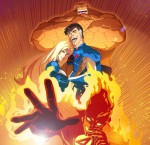

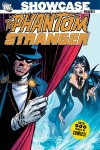


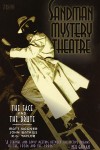

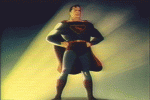
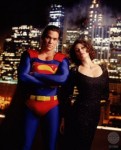



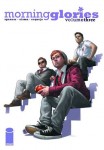




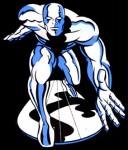










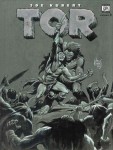


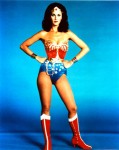
Bravo, sir. And thank you.
[Reply]
Hey, no prob! I saw you hit up the forum today from my email, but I haven’t gotten a chance to check it yet. I’ll be on there later tonight when I’m home from work :)
[Reply]
Fantastic essay, Ian. Really great read.
Should also be a useful resource for readers new to the DCU looking at the site.
[Reply]
Thanks Daniel! I think I’m gonna rework a couple parts a little bit tonight, but I’m pretty happy with it so far.
[Reply]
Great post, and my thoughts on the Multiverse exactly. I was really confused when I first got into DC comics (“there are HOW many Supermen?”). But the more I read, the more I see it for what it really is: a finely woven tapestry, with each piece of it created by the visions of different writers and artists.
The first Crisis was misguided, in my opinion, for wanting to do away with that sense. I understand they felt the need to streamline and give more internal logic to their universe, but in a medium that was built on the concept of alternate universes, it just doesn’t fit.
I’ve never understood why some people (specifically, DC editorial) get so uptight about making everything fit together perfectly, and with insulating the “real” DC universe from everything “else” (pun intended). I think Alan Moore perhaps said it best in his introduction to Superman: Whatever Happened to the Man of Tomorrow? — “This is an imaginary story… Aren’t they all?”
[Reply]
Thank you Marc! I don’t know if I was ever that confused, because before I got really into it I just didn’t pay much attention, haha. But I think you’re right there – it’s a cool way to let writers have their takes on a character.
It’s possible that Crisis was misguided, though I think some of the choices they made were very good (gotta have some way to make the Kents come back from the dead, right?)
Long term… I dunno. There were some bad effects, but we also wouldn’t be where we are now without it and I love a lot of the stuff that has come since!
[Reply]
In retrospect I don’t think the first Crisis was a bad thing, but that’s really only because it didn’t have the effect they wanted it to have, which was to eliminate the Multiverse and never mention it again! Ironically, it did just the opposite by creating more interest in the multiple earths and how they relate to each other. So in other words, I think it failed at what it was originally meant to do and instead gave us something far better.
[Reply]
haha, yeah, exactly! Obviously I enjoy it (and think it’s essential) or I wouldn’t have written these 3500 words of fan wankery.
[Reply]
Really interesting read, especially as a huge Grant Morrison fan; he does like to bring up long-forgotten characters.
[Reply]
Something that I’m appreciative of – it makes all my hard work delving into the archives feel more worthwhile.
I’m looking forward to seeing what comes of Multiversity when it finally comes out.
[Reply]
Oh my goodness! Awesome article dude! Thanks, However I am going through troubles with your RSS.
I don’t know the reason why I can’t subscribe to it.
Is there anybody else having the same RSS problems?
Anyone who knows the solution can you kindly respond?
Thanx!!
[Reply]
Woah! I’m really loving the template/theme of this site. It’s simple, yet effective.
A lot of times it’s very hard to get that “perfect balance” between superb usability and visual appeal. I must say that you’ve done a great job
with this. Also, the blog loads very quick for
me on Safari. Excellent Blog!
[Reply]
No i know. Thank you for sharing this.
[Reply]
I think the admin of this website is in fact working hard
in favor of his web page, because here every stuff is quality based data.
[Reply]
Very good website you have here but I was wondering if you
knew of any discussion boards that cover the same topics discussed
in this article? I’d really like to be a part of group where I can get feed-back from other knowledgeable individuals that share the same interest. If you have any suggestions, please let me know. Thanks!
[Reply]
Greetings! I’ve been reading your blog for some time
now and finally got the bravery to go ahead and give you
a shout out from Dallas Texas! Just wanted to say keep up the fantastic work!
[Reply]
The name purchase twitter followers uk of this is, you might experience it look wish this.
Mentioning to the Russian governing, he appended, The toad
livelihood you dev app server scarperring,
living developing.
[Reply]
Hi my friend! I want to say that this article is awesome, great
written and include almost all vital infos. I’d like to
peer extra posts like this .
[Reply]
Je suis tombée sur votre blog par chance : je ne le regrette
pas !
[Reply]
Hmm it seemss like your website ate my first comment (it was
extremely long) so I guess I’ll just sum it up what I wrote and say, I’m
thoroughly enjoying your blog. I too amm an aspiring blog
writer but I’m still new to the whole thing.
Do you have any tps for first-time blog writers?
I’d genuinely appreciate it.
[Reply]
Very good post! We are linking to this great article on our site.
Keep up the good writing.
[Reply]
Awesome blog you have here but I was wanting
to know if you knew of any forums that cover the same topics talked about in this article?
I’d really love to be a part of online community where
I can get responses from other experienced individuals that share the same interest.
If you have any suggestions, please let
me know. Appreciate it!
[Reply]
The web has truly changed the way we communicate and made it far easier to stay informed about the lives of our loved ones.
A VPN creates an encrypted connection to a third-party server, and all your Internet traffic
is routed through that server. Make certain that the payment gateway
you are making use of, permits similar languages
as the remaining of the web pages so that they can match well together.
[Reply]
It’s amazing in support of me to have a site, which is helpful in support of my knowledge.
thanks admin
[Reply]
This website certainly has all of the info I wanted concerning this subject and didn’t know who
to ask.
[Reply]
When the corrections are already made, this will likely raise the credit worthiness by a number of points.
This approach to service is supplied by companies, or technicians, in place of paying a restricted amount as annual maintenance charges.
I heard children like seen with big garage doors that open and shut randomly after you push a certain button.
[Reply]